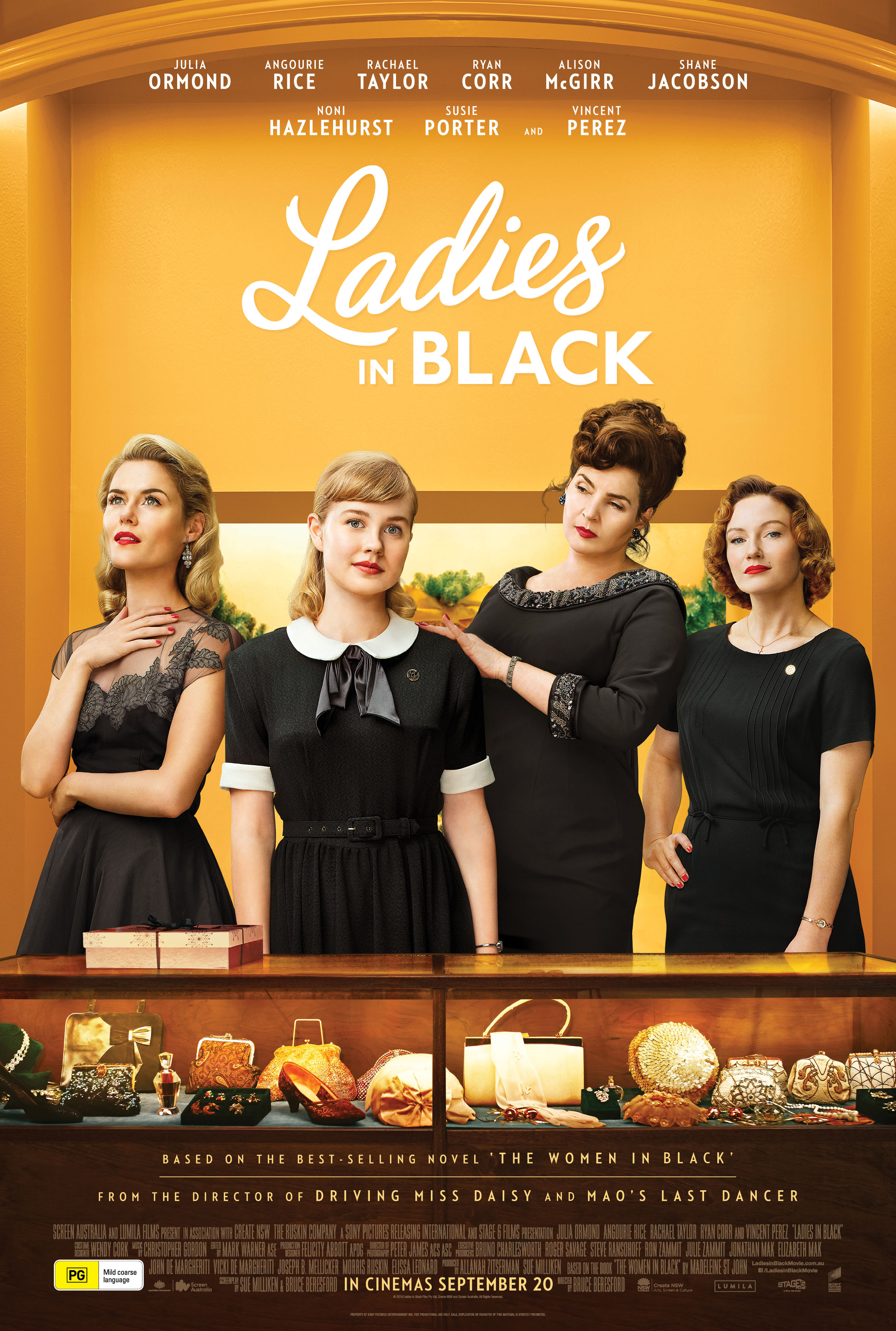Ladies in Black lives up to the hype
Downtown Sydney in the late 1950s was a very different place to what it is today.
There were trams running up and down the main streets, and ‘Goodes’ department store was the shining ‘jewel in the crown’ of the Australian fashion world.
Based on Madeleine St John’s 1993 novel The Women in Black,
veteran director Bruce Beresford’s Ladies in Black captures this era perfectly.
And with a stellar cast including Julia Ormond, the wonderful Angourie Rice, and well-established Australian actors Shane Jacobson, Rachael Taylor and Susie Porter, this film does more than live up to its billing.
Nostalgic and old-fashioned in many ways, Ladies in Black dramatizes much of the sentiment and feeling of the day.
One of the areas it explores is the simmering tension felt by some of the more traditional ‘white’ Australians to the recent, post WW2 influx of refugees (or ‘refos’) in Sydney at that time.
Lesley, sensitively played by Rice, has just started work in Goodes department store as a Christmas shop assistant.
As it is her first job, she is understandably nervous: although being a bright and well-read girl (she hopes to be a poet or author one day), she has high hopes of attending Sydney University.
Unfortunately, her father, laconically played by that most ‘Australian’ of actors, Shane Jacobson, has other ideas, cynically believing University to be full of ‘Libertarians and Communists’.
The film follows the fortunes of Lesley as she works closely with the ‘Ladies in Black’ – so called because they all wear black dresses – in the high fashion retail section of Goodes department store.
Lesley finds her first few days very hard, as she is rushed from ‘pillar to post’ by the two well-established and haughty shop assistants Fay and Patty, ably played by Rachael Taylor and Alison McGirr.
Lesley’s fortunes change for the better, however, when she is taken under the wing of well-bred and glamorous European refugee Magda (Julia Ormond), who runs the store’s most up-market frock department.
Feisty and decisive, Magda takes no nonsense from the other shop girls, and soon builds up a close friendship with Lesley.
The film’s strength is in its sensitive exploration of the social mores and peccadillos of 1950s Australia, with its underlying racism, sexual tension, and often-repressed emotions.
Indeed, it depicts a time when most people, and especially men, did not speak about their problems openly.
It was nevertheless joyous, with Australia experiencing a post-war economic boom, and most people having a decent quality of life.
Perhaps this is the reason why the refugees, although somewhat maligned by some, were nevertheless generally accepted, indeed welcomed, by the majority.
As the film progresses, the sub plot grows and thickens, until by the end of the film, we are left uplifted and energised by a story that gladdens the heart.
Ladies in Black is now showing at Luna Leederville.
By Mike Peeters


